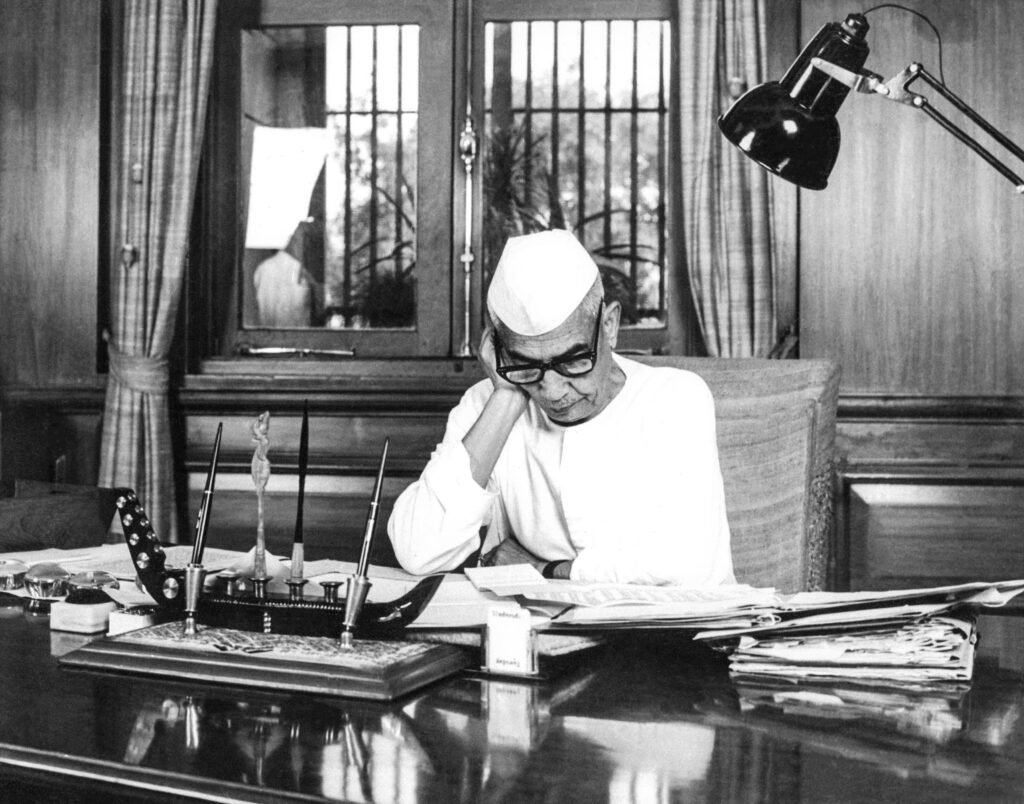Introduction
The Kushan Empire, flourishing between the 1st and 3rd centuries CE, stands as a monumental chapter in the history of ancient South Asia, Central Asia, and beyond. At its zenith under Emperor Kanishka I (r. circa 127–150 CE), the empire stretched from Central Asia to northern India, encompassing regions as diverse as modern-day Uzbekistan, Afghanistan, Pakistan, and India. Kanishka, often referred to as Kanishka the Great, is celebrated for his military conquests, patronage of Buddhism, and contributions to cultural syncretism, particularly through the Gandhara and Mathura schools of art. This article delves into the Kushan Empire’s arrival in India, Kanishka’s conquest of Kashmir, the strategic establishment of Mathura as a capital, and the historical evidence supporting these developments. It explores the political, cultural, and economic dimensions of these events, providing a comprehensive narrative grounded in archaeological, literary, and numismatic sources.

Table of Contents
The Kushan Arrival in India
Origins of the Kushans
The Kushans were one of five branches of the Yuezhi, an Indo-European nomadic confederation originally inhabiting the grasslands of the eastern Tarim Basin in modern-day Xinjiang, China. Around 176–160 BCE, the Yuezhi were displaced westward by the Xiongnu, a powerful nomadic group, forcing them to migrate into Central Asia. By approximately 135 BCE, the Yuezhi reached Bactria (modern-day northern Afghanistan and Uzbekistan), where they displaced the Greco-Bactrian kingdoms established by Alexander the Great’s successors. The Kushans, specifically the Guishuang branch of the Yuezhi, emerged as the dominant group under the leadership of Kujula Kadphises in the early 1st century CE.

Kujula Kadphises, considered the founder of the Kushan Empire, unified the Yuezhi tribes and initiated their expansion into northwestern India. His conquests included the Kabul Valley, Kandahar, and parts of the Indus Valley, where he defeated the Indo-Parthians and Sakas. Kujula’s coinage, imitating Roman and Indo-Greek styles, reflects the Kushans’ early integration into the cultural and economic networks of the region. His son, Vima Taktu (or Sadashkana), and grandson, Vima Kadphises, further consolidated Kushan control, extending their influence into the Punjab and the Mathura region by the late 1st century CE.
Routes and Methods of Arrival
The Kushans entered India primarily through the northwestern passes, leveraging ancient trade and military routes connecting Central Asia to the Indian subcontinent. The most significant pathway was the Khyber Pass, a historic corridor linking Bactria and Gandhara (modern-day northwestern Pakistan and eastern Afghanistan). From their initial base in Bactria, the Kushans moved southward, capturing key cities like Kapisa (near modern Bagram) and Pushkalavati, before establishing Purushapura (modern Peshawar) as a major center. These routes were part of the Silk Road network, facilitating both trade and military campaigns.

The Kushans’ arrival was not a singular event but a gradual process of conquest and assimilation. By the time of Kujula Kadphises, they had displaced the Indo-Parthians in the Kabul Valley and adopted administrative structures like the satrapy system, with kshatrapas (satraps) and mahakshatrapas (great satraps) governing semi-autonomous regions. Their military success relied on a combination of cavalry-based warfare, inherited from their nomadic Yuezhi roots, and strategic alliances with local rulers. The Kushans’ ability to integrate diverse cultural elements—Greek, Persian, and Indian—allowed them to establish stable governance over newly acquired territories.
Motivations for Expansion into India
The Kushans’ southward expansion was driven by a mix of economic, political, and strategic imperatives. The northwestern Indian subcontinent was a prosperous region, enriched by its position along the Silk Road and its agricultural fertility. Controlling key cities like Taxila and Mathura provided access to lucrative trade routes connecting the Roman Empire, Persia, Central Asia, and China. The Kushans sought to dominate these networks to amass wealth, as evidenced by their issuance of gold coins, a practice initiated by Vima Kadphises, which mirrored Roman standards.
Politically, the decline of the Indo-Parthian and Saka kingdoms in the 1st century CE created a power vacuum that the Kushans exploited. The fragmentation of post-Mauryan India, with no dominant empire in the northwest, offered an opportunity for the Kushans to establish hegemony. Additionally, the strategic location of northwestern India provided a buffer against rival powers like the Parthians and later the Sasanians, while also facilitating access to the fertile Gangetic plains.
Kanishka’s Conquest of Kashmir
Historical Context
Kanishka, the most celebrated Kushan ruler, ascended to the throne around 127 CE, succeeding his father, Vima Kadphises. His reign marked the empire’s zenith, with territories stretching from southern Uzbekistan and Tajikistan to Pataliputra in the Gangetic plain. Kashmir, a strategically and culturally significant region, was among the territories Kanishka incorporated into his empire. The conquest of Kashmir is documented in ancient sources, notably the Rajatarangini by Kalhana, a 12th-century chronicle of Kashmiri kings, which credits Kanishka with invading and occupying the region early in his reign.
Routes and Military Strategy
Kanishka’s conquest of Kashmir likely followed the Jhelum Valley road, a well-established route from Gandhara into the Kashmir Valley. This path, running along the Jhelum River through areas like modern-day Muzaffarabad and Baramulla, was a critical trade and military corridor. The route’s accessibility allowed Kanishka’s forces, likely comprising cavalry, infantry, and archers, to navigate the mountainous terrain efficiently. Archaeological evidence, such as the remains of a large stupa at Kanishkapur (modern Kanispora, near Baramulla Pass), supports the claim that Kanishka established a significant presence in the region. The town of Kanishkapur, named after him, underscores his role in consolidating control over Kashmir.
The conquest was likely facilitated by the region’s fragmented political landscape. Prior to Kanishka’s arrival, Kashmir was governed by local rulers or tribal chieftains, with no centralized authority strong enough to resist a well-organized Kushan campaign. Kanishka’s military prowess, honed through earlier campaigns in Central Asia and northern India, would have overwhelmed local resistance. His strategy also involved cultural patronage, particularly of Buddhism, to legitimize his rule and integrate Kashmir into the empire’s administrative framework.
Historical Evidence
Several sources corroborate Kanishka’s conquest of Kashmir:
- Rajatarangini by Kalhana: This 12th-century text explicitly mentions Kanishka’s conquest of Kashmir and his establishment of Kanishkapur. It describes his construction of monasteries, chaityas, and other Buddhist monuments, indicating a significant administrative and cultural presence.
- Archaeological Evidence: The remains of a large stupa at Kanishkapur, near Baramulla, provide tangible evidence of Kanishka’s influence. Excavations have revealed Buddhist structures, suggesting his patronage extended to religious architecture.
- Buddhist Texts: The Śrīdharmapiṭakanidānasūtra, preserved in a Chinese translation from 472 CE, references Kanishka’s conquests, including his control over regions in northern India and Kashmir. His role in convening the Fourth Buddhist Council at Kundalvana (near Srinagar) further ties him to the region.
- Numismatic Evidence: Kanishka’s coins, found across his empire, including in Kashmir, depict a range of deities (Indian, Greek, and Iranian), reflecting his religious syncretism and administrative reach. While not specific to Kashmir, these coins indicate the extent of his territorial control.
Significance of the Conquest
Kanishka’s conquest of Kashmir was strategically vital. The region’s mountainous terrain provided a natural fortress, securing the northern frontier of the Kushan Empire against potential invasions from Central Asia. Kashmir’s position along trade routes connecting India to Central Asia and China also enhanced its economic importance. Culturally, Kashmir became a center for Buddhist learning, hosting the Fourth Buddhist Council, which formalized Mahayana Buddhism under Kanishka’s patronage. This council, presided over by scholars like Vasumitra and Ashvaghosha, marked a pivotal moment in Buddhist history, spreading Mahayana teachings across Asia.
Establishment of Mathura as a Capital
Why Mathura?
Mathura, located on the Yamuna River in modern-day Uttar Pradesh, India, emerged as one of the Kushan Empire’s two primary capitals, alongside Purushapura (Peshawar). The decision to establish Mathura as a capital was driven by its strategic, economic, and cultural significance:
- Geographic and Strategic Importance: Mathura’s location in the fertile Gangetic plain made it a hub for trade and agriculture. Its proximity to major cities like Pataliputra, Kausambi, and Saketa placed it at the heart of northern India’s political and economic networks. The city’s position along trade routes connecting the northwest to the Gangetic plain and central India facilitated control over commerce and communication.
- Economic Prosperity: Mathura was a thriving commercial center, benefiting from its role in Silk Road trade. The city’s markets dealt in goods from Rome, Persia, Central Asia, and China, as evidenced by the presence of Roman gold coins and Kushan coinage. The Kushans’ issuance of gold coins, standardized by Vima Kadphises, underscores Mathura’s role as an economic powerhouse.
- Cultural and Religious Significance: Mathura was a major center for Buddhism, Jainism, and Hinduism, making it a focal point for religious patronage. The city’s existing Buddhist monasteries and artistic traditions, particularly the Mathura school of art, aligned with Kanishka’s patronage of Mahayana Buddhism. The production of Buddhist sculptures, including Bodhisattva statues dated to Kanishka’s reign (e.g., Year 2–32 of his era), highlights Mathura’s role as a cultural capital.
- Administrative Efficiency: By establishing Mathura as a winter capital, the Kushans could govern their eastern territories more effectively. Purushapura, located near the Khyber Pass, was ideal for controlling northwestern and Central Asian territories, while Mathura provided a base for administering the Gangetic plain and central India. This dual-capital system allowed the Kushans to manage their vast empire efficiently.
Historical Evidence for Mathura as a Capital
The designation of Mathura as a Kushan capital is supported by multiple lines of evidence:
- Rabatak Inscription: Discovered in Afghanistan in 1993, this Bactrian inscription from Kanishka’s reign lists cities under his control, including Mathura, alongside Saketa, Kausambi, Pataliputra, and Sri Champa. It confirms Mathura’s status as a key administrative center.
- Archaeological Evidence: Excavations in Mathura have uncovered numerous Kushan-era artifacts, including a colossal statue of Kanishka (headless, discovered in 1911 at Mat village) inscribed with “Great King, King of Kings, Son of God, Kanishka.” This statue, housed in the Archaeological Museum in Mathura, underscores the city’s importance. Buddhist sculptures, such as the Kosambi Bodhisattva (Year 2 of Kanishka, 129 CE) and Bala Bodhisattva (Year 3, 130 CE), further attest to Mathura’s role as a center of art and administration.
- Numismatic Evidence: Kanishka’s coins, found in abundance in Mathura, depict a variety of deities, including Buddhist, Hindu, Greek, and Iranian figures. These coins, initially inscribed in Greek and later in Bactrian, reflect Mathura’s role as a melting pot of cultures and a key minting center.
- Literary Sources: Buddhist texts, such as the Śrīdharmapiṭakanidānasūtra, mention Kanishka’s conquests extending to Mathura and Pataliputra, indicating the city’s integration into the empire. Chinese sources, like the Hou Hanshu, also reference Kushan control over northern India, with Mathura as a pivotal city.
- Epigraphic Evidence: Inscriptions from Mathura, such as those on Buddhist statues, frequently mention Kanishka’s era (e.g., Year 2, 3, 4, and 32), confirming the city’s prominence during his reign. The presence of inscriptions naming subsequent Kushan rulers like Vāsishka and Huvishka further solidifies Mathura’s enduring role as a capital.
Reasons for Choosing Mathura
The Kushans’ choice of Mathura as a capital was a calculated decision. Unlike Purushapura, which was strategically positioned near the Khyber Pass to control Central Asian trade and defense, Mathura offered access to the heart of India’s economic and cultural landscape. Its proximity to the Yamuna River ensured agricultural productivity, while its religious diversity allowed the Kushans to project a policy of religious tolerance, aligning with their syncretic governance model. Kanishka’s patronage of Buddhism, evidenced by the proliferation of Buddhist art and the construction of monasteries in Mathura, further cemented the city’s status. The Mathura school of art, which produced stylized sandstone sculptures of the Buddha and Bodhisattvas, flourished under Kushan patronage, contrasting with the Greco-Buddhist Gandhara school’s naturalistic style.
Moreover, Mathura’s historical significance predating the Kushans—as a center of Mauryan and post-Mauryan art and religion—made it an ideal choice for legitimizing Kushan rule in India. By associating themselves with Mathura’s cultural heritage, the Kushans positioned themselves as successors to earlier Indian dynasties, enhancing their authority among local populations.
Kanishka’s Reign and Contributions
Military Achievements
Kanishka’s reign was marked by extensive military campaigns that expanded the Kushan Empire to its greatest extent. Beyond Kashmir and Mathura, he conquered regions as far east as Pataliputra and Sri Champa, according to the Rabatak inscription. His campaigns also extended into Central Asia, where he may have subjugated city-states like Khotan, Kashgar, and Yarkand, though direct control over these areas remains debated. A notable military engagement was his conflict with the Chinese general Ban Chao near Khotan in 90 CE, where the Kushans, led by a viceroy named Xie, were defeated. However, Kanishka later achieved victories against Chinese forces, securing parts of the Tarim Basin.
Patronage of Buddhism
Kanishka’s most enduring legacy is his patronage of Buddhism, particularly the Mahayana branch. Although he never formally converted, his support for Buddhist institutions and art transformed the religion’s trajectory. The Fourth Buddhist Council, convened at Kundalvana in Kashmir around 78 CE (though some sources suggest later), was a landmark event. Presided over by Vasumitra and Ashvaghosha, the council standardized Mahayana teachings, producing commentaries engraved on copper plates (preserved in Chinese translations). This event facilitated Buddhism’s spread along the Silk Road to Central Asia and China.
Kanishka’s patronage is also evident in the construction of the Kanishka Stupa in Purushapura, one of the tallest structures of its time, and numerous monasteries and stupas in Mathura and Sarnath. The Kanishka Casket, a bronze reliquary found beneath the stupa, contains images of the Buddha and Kanishka, symbolizing his devotion.
Cultural Syncretism
Kanishka’s empire was a crucible of cultural synthesis, blending Greek, Persian, Indian, and Central Asian elements. His coins, initially inscribed in Greek and later in Bactrian, feature deities from multiple pantheons, including the Buddha, Shiva, Zoroastrian gods like Mithra, and Greek figures like Helios. This religious syncretism reflected the empire’s diverse population and Kanishka’s policy of tolerance. The Gandhara and Mathura schools of art, patronized by Kanishka, produced iconic Buddhist sculptures that combined Hellenistic realism with Indian spiritualism, influencing art across Asia.
Administration and Economy
Kanishka’s administration was sophisticated, employing a hierarchical system of kshatrapas and mahakshatrapas to govern distant provinces. The Rabatak inscription details his appointment of officials to oversee religious and administrative functions, such as the construction of temples. The empire’s economy thrived on trade, with Mathura and Purushapura serving as key nodes in the Silk Road network. The Kushans’ gold coins, standardized under Vima Kadphises, facilitated commerce with Rome, Persia, and China, as evidenced by Roman coin hoards found in India.
Historical Evidence: A Synthesis
The Kushan Empire’s history, particularly Kanishka’s conquests and the role of Mathura, is reconstructed from a rich array of sources:
- Inscriptions: The Rabatak inscription is a cornerstone, detailing Kanishka’s genealogy, conquests, and administrative policies. Inscriptions on Mathura statues, such as the Kosambi and Bala Bodhisattvas, provide precise dates in Kanishka’s era, confirming his control over the region.
- Archaeological Finds: The Kanishka Stupa in Peshawar, the headless statue in Mathura, and Buddhist structures in Kashmir and Sarnath offer physical evidence of his patronage and presence. Excavations at Taxila, Begram, and Surkh Kotal reveal the empire’s urban and cultural sophistication.
- Numismatic Evidence: Kanishka’s coins, found across India, Central Asia, and China, illustrate the empire’s extent and cultural diversity. Their transition from Greek to Bactrian script marks a shift in administrative language around 127 CE.
- Literary Sources: Buddhist texts like the Śrīdharmapiṭakanidānasūtra and Chinese chronicles like the Hou Hanshu document Kanishka’s conquests and Buddhist patronage. Kalhana’s Rajatarangini provides a Kashmiri perspective, though written centuries later.
- Artistic Evidence: The Gandhara and Mathura schools of art, flourishing under Kanishka, produced sculptures that reflect his patronage and the empire’s cultural syncretism. Statues dated to his reign, such as those from Mathura, are inscribed with his era, linking him directly to the city.
Challenges and Debates
Despite the wealth of evidence, several aspects of Kanishka’s reign and the Kushan Empire remain debated:
- Chronology: The exact dates of Kanishka’s reign are uncertain, with estimates ranging from 78–103 CE to 127–150 CE. Recent scholarship, based on the Rabatak inscription and Harry Falk’s research, favors the later range, placing his accession around 127 CE.
- Extent of Conquests: While the Rabatak inscription claims Kanishka held Pataliputra and Sri Champa, some historians question the extent of his direct control over eastern India, suggesting these areas may have been under tributary rulers.
- Religious Affiliation: Although Kanishka is celebrated as a Buddhist patron, his coins depict a range of deities, raising questions about his personal beliefs. Some sources suggest he adopted Buddhism later in life, influenced by scholars like Ashvaghosha.
- Kashmir’s Conquest: While Kalhana’s Rajatarangini confirms Kanishka’s conquest, the lack of contemporary Kashmiri inscriptions limits direct evidence. The stupa at Kanishkapur remains the primary archaeological marker.
Decline of the Kushan Empire
After Kanishka’s death around 150 CE, the Kushan Empire continued under his successors, notably Huvishka and Vasudeva I. Huvishka consolidated control in northern India, maintaining Mathura as a capital, while Vasudeva I faced increasing pressure from the Sasanian Empire in the west and the emerging Gupta Empire in the east. By the mid-3rd century, the empire fragmented, with local rulers like the “Little Kushans” in Punjab and the Indo-Sasanians in the northwest eroding central authority. The final decline came around 350 CE, as the Guptas annexed Mathura and other eastern territories.
Conclusion
Kanishka’s conquest of Kashmir and the establishment of Mathura as a capital were pivotal moments in the Kushan Empire’s history, reflecting its military, economic, and cultural ambitions. The Kushans’ arrival in India, facilitated by northwestern passes and strategic conquests, laid the foundation for their expansive empire. Mathura’s selection as a capital was a masterstroke, leveraging its economic prosperity, cultural significance, and strategic location to govern northern India. Kanishka’s patronage of Buddhism, particularly through the Fourth Buddhist Council and the promotion of the Gandhara and Mathura schools, left an indelible mark on Asian history. Supported by inscriptions, archaeological finds, coins, and literary sources, these achievements underscore the Kushan Empire’s role as a bridge between East and West, fostering a legacy of cultural synthesis that endured long after its decline.


